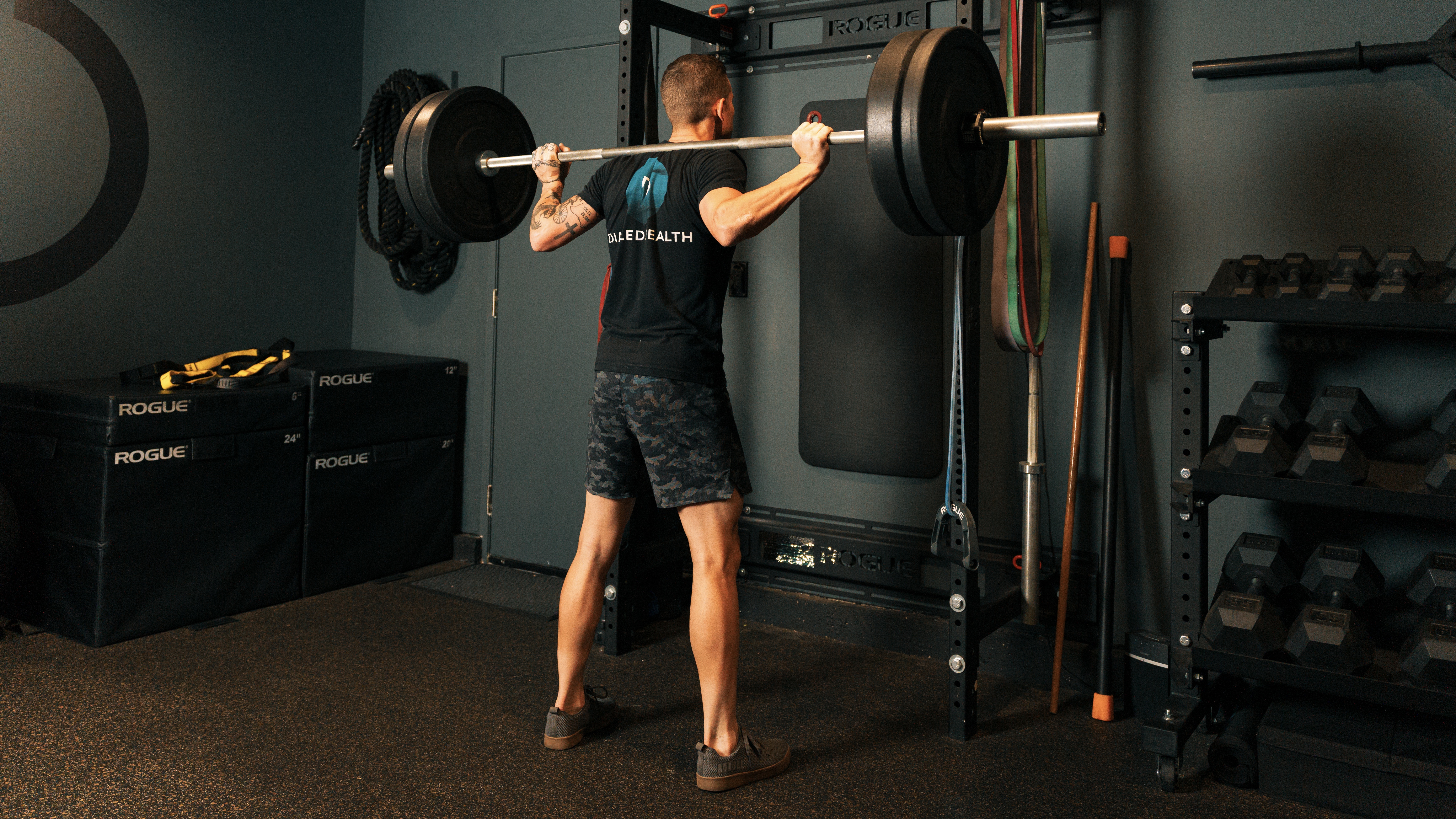
How To Choose The Right Weight
"What weight should I use" is one of the most frequently asked questions I get. With so many different movements, rep ranges, and equipment choices, it's valid. Below is our recommendation, which includes some potentially new terminology and practical situations athletes find themselves in so you can understand how to implement it.
RPE/RIR - What is it and why do we use it?
When it comes to picking a proper weight for an exercise, we typically suggest using either a Reps In Reserve (RIR) or Rating of Perceived Exertion (RPE) Scale, or a combination of both. Both methods work well (the only exception would probably be when training for Power; RPE is typically a better gauge there).
*We use this scale rather than determining weight based off of a 1-rep max percentage because it takes into account how you feel on any given training day. It allows you to adjust your intensity accordingly while still obtaining the required stimulus to effectively train the adaptation needed for a specific phase of programming.
Your body is only going to recognize how hard a given stimulus feels, not necessarily the 10lb difference in weight from week to week. 4 sets of bench press for 8 reps at 135lb could feel like a RPE 7/RIR 3 one week, then an RPE 9/RIR 1 the next, so having a method of choosing weights that allow you to adjust your training intensity accordingly is going to allow for the best long-term results.
Reps in Reserve is essentially how many reps you feel you have left in the tank at the end of a set. A 2RIR would mean 2 reps left in the tank. This requires a little guessing, which will become more accurate as you gain experience.
Rating of Perceived Exertion is how difficult a weight feels using a scale of 1-10.
Ex. - Barbell Back Squat 3x10 @ RPE 8/RIR 2 - for each set, the weight should feel like an 8/10 or like you have 2 quality reps left in the tank.

How to Utilize RPE/RIR in Each Phase of a Dialed Health Program:
The first two variables that will give you an idea of which weight to use are the movments themselves and the reps prescribed. The more reps, the less weight you will use and vice versa.
Muscular Endurance (12-20 Reps): RPE 5-6/RIR 4-5
Hypertrophy (6-12 Reps): RPE 7-8/RIR 2-3
Strength (3-5 reps): RPE 9-10/RIR 1-2
Power (5-10 reps) RPE 3-7
-
use a lower RPE (RPE 3-4) for higher rep power movements in the 8-10 rep range
-
use a higher RPE (5-7) for lower-rep power movements in the 5-6 rep range
Advanced Lifters
More advanced lifters can use a percentage of of their 1 Rep Max (1RM) if they’d prefer. We suggest using a 10 Rep Max (10RM) and plugging it into a calculator to find your 1RM. From there you can utilize the proper percentages of your 1RM to train in the respective zone depending on the adaptation (Endurance - 65% 1RM, Hypertrophy 65-85% 1RM, Max Strength 85-95% 1RM). *RPE or RIR will still work well for advanced lifters though as long as form is maintained!
Beginner Lifters
It will take trial and error to find which weight to start with for a given exercise. After consistent strength training, you’ll understand a ballpark range of what weight to grab for a given movement making this “guess” more accurate overtime for specific movements, equipment used, and rep ranges. For example; you’ll know that a shoulder press will require less weight than a deadlift and that you can do more total weight with a barbell than dumbbells since it’s more stable.
As much as I’d love to toss out some numbers for you as your coach, many factors play into it (body weight, muscle mass, gender, training experience, fatigue levels, etc.). You will have to go through a trial and error process on your own.
Going To Failure Vs. Technical Max
Regardless of your experience level, the main thing to emphasize is form. If you’re throwing weight around using a lot of body language, the weight is too heavy. Going to a true failure means that your form is breaking down to the point where it's going to require compensations from your body to complete the rep. This is an unnecessary risk we do not recommend. Your new “max” should be a “technical max” meaning that losing proper form is your limit.
Accidentally Going Too Heavy or Too Light
Give yourself a slight buffer with the rep range. If you choose a weight with a target of 8 reps, but 10 reps feels perfect for an RPE of 8 or 2RIR, don’t panic. You’re still following the program and can adjust for the following set. In this example, you would want to go up in weight. If the goal was 6 reps, but your form starts to break down at rep 4, that’s ok. Stop there and decrease the weight for the following set.
Even when you nail it and have what feels like the “perfect weight”, the weights will likely change over time. There are a variety of factors that contribute to this. As you get stronger, develop more stability and motor control through your movement patterns, or learn to better manage external stressors (work, family, sleep, etc.)… your body will continue to adapt. Don’t be afraid to experiment as you notice these changes.

Coach Josh and I (Coach Derek) created this guide in hopes that it helps you execute your sessions with more safety and confidence. If you want to dive even deeper, we discuss the details on this podcast. If you have further questions, send them using the contact form on the community page.